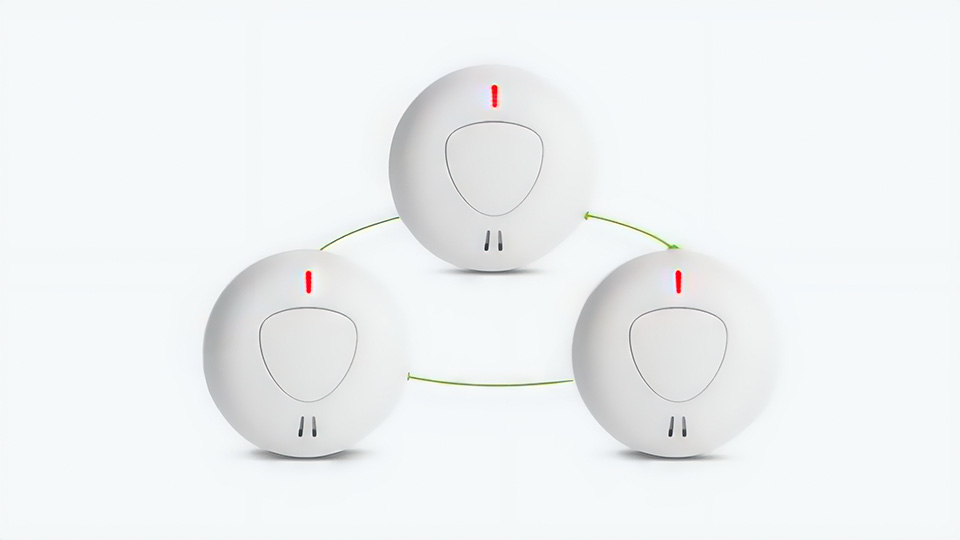
Smoke alarm is a topic that often goes overlooked in the realm of home ownership. We tend to take these small, inconspicuous devices for granted, assuming they will always be there to protect us in the event of a fire.
Yes, a simple, small device installed in your home can make the difference between life and death. With this in mind, let's take a closer look at photoelectric smoke alarms and how they can be your saving grace in the event of a fire.
Smoke alarms have come a long way in recent years. Long gone are the days of the simple standalone alarms that would only alert the immediate area of danger. Today, interconnected smoke alarms can alert the entire household, even if the danger is only in one room. Specifically, photoelectric smoke alarms have emerged as superior in terms of reliability and responsiveness.
But what makes photoelectric smoke alarms so special? How does home fire safety fit into this picture? And can these smoke alarms actually be interconnected wirelessly? Let's explore these questions together.
Photoelectric smoke alarms are modern devices designed to detect the presence of smoke in your home. They operate using a light sensor. When smoke enters the alarm, it scatters the light beam within the unit. This scattered light hits the sensor, triggering the alarm.
The beauty of these alarms is their quick response to slow, smoldering fires - the kind that produce a lot of smoke and can fill your home with deadly gases before bursting into flames. This gives you and your family crucial time to exit the home safely.
While all smoke alarms serve a life-saving purpose, photoelectric alarms are generally considered superior to traditional ionization alarms. The latter are more likely to react to fast flaming fires and can be prone to false alarms, particularly when placed near kitchens or bathrooms.
One of the main advantages of photoelectric smoke alarms is their ability to detect smoky, smoldering fires. These types of fires can often go unnoticed until it's too late, especially while you're sleeping. The early detection provided by photoelectric alarms could be the difference between a close call and a tragic event.
Another benefit of photoelectric alarms is their reduced likelihood of false alarms. We all know how annoying it can be when the smoke alarm goes off while we're cooking dinner. With photoelectric alarms, this is less likely to happen, which means you can trust that when the alarm sounds, it's time to take action.
Finally, many photoelectric alarms come with a long-life battery that can last up to 10 years. This means less maintenance for you and more peace of mind knowing that your alarm is always ready to protect your family.
Understanding the Basics
Home fire safety is all about minimizing the risks of a fire in your home and knowing what to do if a fire does occur. It encompasses a wide range of measures, from installing and maintaining smoke alarms, to having a fire escape plan, to using appliances safely.
At the heart of home fire safety is the smoke alarm. It's your first line of defense against a fire. However, having a smoke alarm is not enough. It needs to be tested regularly to ensure it's working properly. And you should have enough alarms installed throughout your home to alert you no matter where a fire starts.
But home fire safety doesn't stop at smoke alarms. It's also important to have a fire escape plan that everyone in your family understands. This plan should include two ways to escape from each room and a safe meeting place outside the home.
Interconnecting Smoke Alarms: The Next Level of Safety
Interconnecting smoke alarms take home fire safety to the next level. In a system of interconnected alarms, when one alarm detects smoke, all the alarms in the network sound. This ensures that everyone in the home is alerted to the danger, even if the fire is in a distant part of the house.
Imagine a fire starts in your basement while you're sleeping upstairs. A standalone smoke alarm in the basement might not be enough to wake you up. But if the basement alarm triggers all the alarms in your home, you're much more likely to hear it and escape in time.
Interconnected smoke alarms can be hardwired together, but for many homeowners, the idea of running wires through walls and ceilings is less than appealing. Thankfully, there's a solution: wireless interconnection.
The Power of Wireless Interconnection
Yes, smoke alarms can be interconnected wirelessly! This is a game-changer for home fire safety. Wireless interconnection allows you to link together your smoke alarms without the need for hardwiring. When one alarm sounds, they all sound, providing you with the earliest possible warning of danger.
Wireless interconnected smoke alarms communicate with each other using radio frequency signals. The setup is usually simple and straightforward. Most models allow you to interconnect up to 12 or 24 alarms, which should be more than enough for most homes.
Adding a wireless interconnected system of photoelectric smoke alarms to your home not only enhances your protection in the event of a fire, but can also provide peace of mind knowing that you've done everything you can to keep your family safe.
Home fire safety is not something to be taken lightly. A properly installed and maintained system of photoelectric smoke alarms can provide you with the early warning you need to escape from a fire safely.
Remember, interconnected smoke alarms are the most effective way to ensure that everyone in your home is alerted to a fire as soon as possible. And with the advent of wireless interconnection, setting up this system is easier than ever.
So, take the time to review your home fire safety measures. Consider upgrading to interconnected photoelectric smoke alarms if you haven't already. It's a small investment that could save your life.